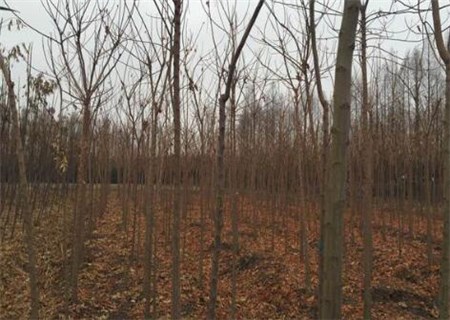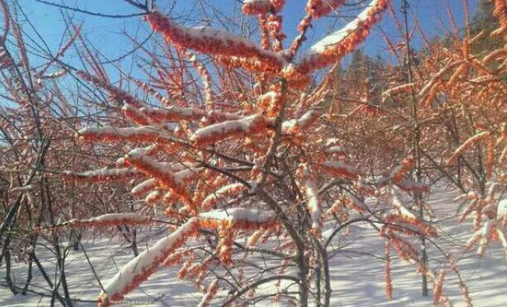How to plant the seeds of Berberis purpurea? How do you breed? What are the medicinal effects?
Purple leaf Berberis is very adaptable, like the light environment, but also resistant to semi-shade, so how to plant purple leaf Berberis seeds? How do you breed? What are the medicinal effects? It is understood that purple leaf Berberis originated in Japan, the south of northeast China, North China and Qinling Mountains. At present, it is cultivated in major cities in China, and it is a very good garden ornamental shrub.

First, how to plant purple leaf Berberis seeds?
Sowing time
According to the difference of region and climate, the sowing time should also be different. Here, represented by the north, the climate is warm in March and April, and the soil layer has just passed the winter. Sterilization at low temperature can reduce germs.
Treatment of seeds
1. Soak the seeds in diluted carbendazim for one day, during which the river sand is screened and added carbendazim to sterilize. After soaking, the seeds are fished out and mixed into the sifted river sand, which can be planted at the ratio of 1:3.
2. Find a high leeward, sunny side, and dig a square hole, which is unlimited in size and depends on the number of seeds you want to send. Add five centimeters of river sand to the pit and insert a tube for ventilation.
3. Pour the mixture of the above seeds and sand into the dug pit, cover it with 5 cm of river sand, and then cover with soil, which is also 5 cm.
4. Check whether the seed is sprouting regularly. If the temperature is right, you can find the seed cracking and sprouting in about ten days to half a month.
Nursery bed making
1. Select the soil with good fertility and turn the soil deeply before sowing, at least 30 cm deep. Remove weeds, stones and other impurities. Make a seedbed with a length of 10 meters, a width of 1 meter and a height of 20 centimeters, with each ridge spaced 30 centimeters apart. The bed should be flat, and the difference in size and specification should not be too big. If you can't grasp it well, you can measure and mark it in advance.
Choose a sunny day to disinfect the land with carbendazim, preferably five days before sowing.
2. Sow the seeds on a high bed at intervals of one to two centimeters, and cover the soil with a thickness of about two centimeters. Using spray for water supply, the ditch between the two beds can be irrigated to provide moisture for seed germination, and the soil layer should be completely moist.
Later stage management
1. Weeding
Weeds may appear after sowing, which should be cleaned up in time; even the grass should not be easily let go, and should be removed once it is found. The soil can be loosened.
2. The seeds should be fertilized after the seedlings grow. When the seedlings grow to five centimeters, fertilizers should be irrigated in time.
Second, how to reproduce?
Sowing seeds
Purple leaf Berberis originated from Japan, is now produced in Zhejiang, Anhui and other places in China, and is basically planted in northern cities. Seeds are collected in autumn, the pulp is removed and dried in the shade, then the seeds and sand are stored proportionally in high and dry pits, and the seeds are taken out in the spring of the following year and begin to sow. In addition to spring sowing, it can also be collected and sowed in autumn.
Cuttage
There are two cutting methods of Berberis amurensis. One is hardwood cutting, and the other is softwood cutting. The suitable time for cutting is in June and July in summer, select semi-lignified branches for pruning, and insert them in sand or gravel after pruning. During this period, attention should be paid to maintaining humidity and temperature, and roots can be formed in more than half a month. In autumn, choose the better growing branches as the cuttings, the cutting method is the same as in summer, and it can be transplanted in the following spring.
Ramet
The growth ability of purple leaf Berberis is very strong, so ramet propagation is also a good method, the ramet season is not suitable except summer, any other time. The tufted plants were propagated separately.
Third, what are the medicinal effects?
1. Functional indications of Berberis purpurea
Purple leaf Berberis can clear heat and dampness, purge fire and detoxify. Commonly used in the treatment of acute enteritis, jaundice, pneumonia, conjunctivitis, carbuncle, boil, blood avalanche and so on.
Usage of Purple Leaf Berberis
Internal service: fried soup, 1: 3 yuan; or stewed meat suit. External use: eye drops with fried water; or powder powder; hot compress with fried water.
2. Clinical application of Berberis purpurea
Chronic tracheitis
The whole herb of Berberis angustifolia is fried into ointment and pressed into tablets, which has antitussive, expectorant and anti-inflammatory effects, among which the anti-inflammatory effect is better. Clinical studies have shown that patients have increased food intake, good spirit and sleep, and no toxic side effects.
Infantile pneumonia
Berberine can be extracted from Berberis amurensis. Berberine is made into bactericidal and antipyretic injection for intravenous injection, which has obvious antibacterial, anti-infective and antipyretic effect.
Dysentery, enteritis
Berberine (crude extract) extracted from berberine root of purple leaf was made into capsules and taken with warm water to treat dysentery, which was doubled for the first time in adults and halved in children.
Cerebrospinal meningitis
Take off the purple leaf berberis root, soak it in water for one day and night, and boil it after adding water, which can be used for nasal dripping and ventilation.
Time: 2019-03-16 Click:
- Prev

What are the planting skills and maintenance knowledge of Euphorbiaceae Chongyang wood? What is the main place of origin? How much is one?
Chongyang wood belongs to Euphorbiaceae. Native to China, native to the Qinling Mountains and south of the Huaihe River Basin, it is commonly cultivated in the middle and lower reaches of the Yangtze River. It is usually cultivated as street trees and garden ornamental trees. Do you know the planting skills and maintenance knowledge of Chongyang wood? What is the main place of origin? How much is it per tree?
- Next

The cultivation methods and matters needing attention of Hippophae rhamnoides in Rosacea? What is the effect and effect? How to sow seeds?
Hippophae rhamnoides is vinegar willow, also known as black thorn and acid thorn, so the breeding methods and points for attention of seabuckthorn? What is the effect and effect? How to sow seeds? It is understood that Hippophae rhamnoides is a relatively cold-tolerant plant, and can tolerate salinity and barren, and its vitality is very tenacious. Seabuckthorn is a very precious economic tree species.
Related
- Fuxing push coffee new agricultural production and marketing class: lack of small-scale processing plants
- Jujube rice field leisure farm deep ploughing Yilan for five years to create a space for organic food and play
- Nongyu Farm-A trial of organic papaya for brave women with advanced technology
- Four points for attention in the prevention and control of diseases and insect pests of edible fungi
- How to add nutrient solution to Edible Fungi
- Is there any good way to control edible fungus mites?
- Open Inoculation Technology of Edible Fungi
- Is there any clever way to use fertilizer for edible fungus in winter?
- What agents are used to kill the pathogens of edible fungi in the mushroom shed?
- Rapid drying of Edible Fungi

